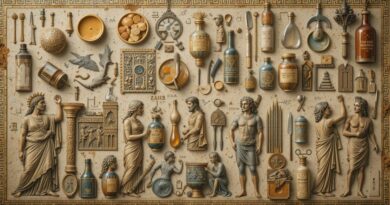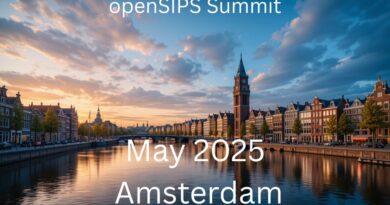Voice Recognition & Translation Tools Are Revolutionising Multimedia
Voice recognition and translation technologies are converging to create unprecedented multimedia experiences. From real-time video conferencing translations to AI-powered podcast transcriptions, these tools are dismantling communication barriers and opening new frontiers in global content consumption.
The Current State of Voice Recognition Technology
Voice recognition technology has evolved dramatically from its rudimentary beginnings in the 1950s. Today’s automatic speech recognition (ASR) systems achieve accuracy rates exceeding 95% under optimal conditions, powered by sophisticated neural networks and machine learning algorithms.
The transformation has been particularly pronounced in multimedia applications. Modern voice recognition systems can now distinguish between multiple speakers, filter background noise, and adapt to various accents and dialects. This technological maturation has coincided with the explosive growth of multimedia content, creating fertile ground for innovative applications.
Google’s Speech-to-Text API exemplifies this advancement, supporting over 125 languages and variants whilst processing audio in real-time or batch mode. Similarly, Microsoft’s Azure Speech Services offers neural voice synthesis alongside recognition capabilities, enabling bidirectional voice processing for multimedia applications.
Translation Technology: Beyond Simple Word Conversion
Modern translation tools have transcended basic word-for-word conversion to embrace contextual understanding and cultural nuance. Neural machine translation (NMT) represents the current gold standard, employing deep learning models to analyse entire sentences and paragraphs for meaning rather than processing individual words in isolation.
The integration of translation technology with multimedia platforms has created particularly compelling use cases. Video streaming services now offer automatic subtitle generation and translation, whilst podcast platforms provide multilingual transcripts generated entirely through AI processing.
DeepL, often regarded as the most sophisticated translation service available, demonstrates how advanced algorithms can capture subtle linguistic nuances. The platform’s success stems from its training on diverse text corpora and its ability to understand context within longer passages.
Multimedia Integration: Where Voice Meets Visual
The convergence of voice recognition and translation technologies with multimedia platforms has spawned numerous innovative applications. Video conferencing platforms now routinely offer real-time transcription and translation services, enabling seamless communication across language barriers.
Zoom’s live transcription feature exemplifies this integration, providing automated captions that can be translated into multiple languages during live meetings. This functionality has proven invaluable for international business communications and educational applications.
Content creators are leveraging these tools to expand their global reach. YouTube’s automatic caption generation, powered by Google’s speech recognition technology, processes millions of hours of video content daily. The platform’s subsequent translation of these captions into dozens of languages demonstrates the scalability of modern voice recognition and translation systems.
Real-World Applications Across Industries
Broadcasting and Media
Television broadcasters have embraced voice recognition and translation tools to enhance accessibility and expand viewership. BBC iPlayer’s subtitle generation employs automated speech recognition to create captions for live broadcasts, whilst translation services enable international content distribution.
Streaming platforms utilise these technologies for content localisation at unprecedented scales. Netflix processes thousands of hours of content through automated transcription systems, creating foundation materials for human translators and subtitle editors.
Education and E-Learning
Educational institutions have rapidly adopted voice recognition and translation tools to support diverse student populations. Microsoft Translator in PowerPoint enables real-time presentation translations, allowing educators to deliver content to multilingual audiences simultaneously.
Language learning platforms have revolutionised their offerings through voice recognition integration. Duolingo’s speech recognition feature provides pronunciation feedback by analysing learners’ spoken responses against native speaker models.
Corporate Communications
International corporations leverage voice recognition and translation tools for internal communications and customer service applications. Call centre operations increasingly employ real-time translation to support multilingual customer bases without requiring extensive human interpreter networks.
Microsoft Teams’ live translation feature demonstrates enterprise-level implementation, enabling teams across different countries to collaborate effectively without language barriers constraining productivity.
Technical Challenges and Limitations
Despite remarkable progress, voice recognition and translation tools face several persistent challenges in multimedia applications. Audio quality significantly impacts recognition accuracy, with background noise, multiple speakers, and poor recording conditions degrading performance substantially.
Accent and dialect variations present ongoing difficulties. Whilst major platforms have improved support for standard language variants, regional accents and colloquialisms often challenge recognition systems. This limitation particularly affects multimedia content from diverse geographical regions.
Translation accuracy remains contextually dependent. Technical terminology, cultural references, and idiomatic expressions frequently require human intervention to achieve acceptable quality levels. The automotive industry’s adoption of voice recognition systems illustrates these challenges, where safety-critical applications demand near-perfect accuracy rates.
Emerging Technologies and Future Prospects
The integration of artificial intelligence and machine learning continues advancing voice recognition and translation capabilities. Transformer-based models, popularised by applications like ChatGPT, are being adapted for speech processing tasks with promising results.
Real-time voice cloning and synthesis technologies are emerging as significant developments. ElevenLabs’ voice synthesis platform demonstrates how AI can generate natural-sounding speech in multiple languages whilst preserving speaker characteristics.
Edge computing implementation represents another frontier, enabling voice processing directly on user devices rather than relying on cloud services. This development addresses privacy concerns whilst reducing latency for real-time applications.
Privacy and Security Considerations
Voice recognition and translation tools in multimedia applications raise significant privacy concerns. Audio data processing requires careful consideration of user consent and data protection regulations, particularly under frameworks like GDPR.
Cloud-based processing, whilst offering superior computational resources, creates potential security vulnerabilities. Organisations implementing these technologies must balance functionality with data protection requirements, often leading to hybrid deployment strategies combining local and cloud processing.
Apple’s approach to voice processing exemplifies privacy-conscious implementation, performing much speech recognition locally on devices whilst minimising data transmission to external servers.
Industry Standards and Interoperability
The development of industry standards for voice recognition and translation in multimedia applications remains fragmented. Various platforms employ proprietary formats and APIs, limiting interoperability between different service providers.
The Web Speech API represents an attempt to standardise browser-based voice recognition capabilities, enabling developers to integrate speech processing functionality across different web applications consistently.
Standards organisations like the International Organization for Standardization are working to establish guidelines for speech technology implementation, though widespread adoption remains inconsistent across the industry.
Cost Considerations and Accessibility
The democratisation of voice recognition and translation tools has significantly reduced implementation costs for multimedia applications. Cloud-based services offer pay-per-use pricing models that enable small developers to access sophisticated capabilities previously available only to large corporations.
Google Cloud Speech-to-Text pricing demonstrates this accessibility, offering free monthly processing quotas followed by competitive per-minute rates for additional usage.
However, cost considerations extend beyond direct service fees. Integration complexity, maintenance requirements, and quality assurance processes can substantially increase total implementation costs for multimedia applications.
The Road Ahead
Voice recognition and translation tools are poised to become ubiquitous components of multimedia applications. The convergence of improving accuracy, reducing costs, and expanding language support creates compelling value propositions across numerous industries.
The emergence of multimodal AI systems that combine voice, text, and visual processing capabilities suggests future multimedia applications will offer even more sophisticated user experiences. These systems will likely integrate voice recognition and translation as foundational components rather than auxiliary features.
As global content consumption continues growing and audiences become increasingly diverse, the demand for seamless voice recognition and translation capabilities in multimedia applications will only intensify. The organisations and platforms that successfully implement these technologies will gain significant competitive advantages in the evolving digital landscape.
The transformation of multimedia through voice recognition and translation tools represents more than technological advancement—it embodies the democratisation of global communication and the breaking down of linguistic barriers that have historically constrained human interaction and knowledge sharing.
We’d love your questions or comments on today’s topic!
For more articles like this one, click here.
Thought for the day:
“Trust yourself. Create the kind of self that you will be happy to live with all your life. Make the most of yourself by fanning the tiny, inner sparks of possibility into flames of achievement.” Golda Meir



